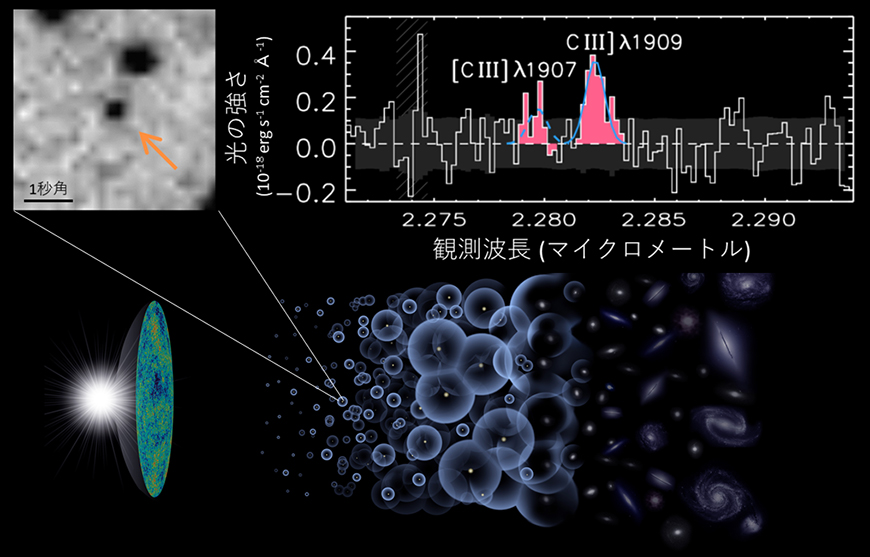Disclaimer: machine translated by DeepL which may contain errors.
Identification of the Most Distant Galaxy Ever Observed, 13.4 Billion Light-Years Away
Nobushige Kashiwagawa, Professor , Department of Astronomy |


Astronomy is a discipline that is confined to the Earth. If we astronomers could, we would like to touch, grow, and test objects like other sciences. Although Hayabusa was able to go to an asteroid, it is difficult to travel to a supernova hundreds of millions of light years away or enter a black hole at the center of our galaxy, so we study remotely from Earth. Since the dawn of history, human beings have looked up at the night sky and pondered the "vastness" and "structure" of the world, making use of their knowledge and experience. But there is a limit to what the human eye can do. We want to know more about the world. About 400 years ago, mankind finally created the telescope. This was the beginning of "home observation" from the Earth. With this first telescope, we learned that the moon next door had mountains and valleys, and that Jupiter, two or three houses away, had four moons. This was an epoch-making achievement that greatly expanded the world known to mankind at that time. I want to know more about the world. To improve the efficiency of telecommuting, it is essential to enhance remote equipment. Fifty years ago, the end of the universe as known to mankind was only 5 billion light-years from the earth. 30 years ago, it was over 10 billion light-years. Thirty years ago, it was over 10 billion light years away. But the universe still extends far beyond that.
Recently, a galaxy called GN-z11 has been attracting researchers' attention. This galaxy was discovered by the Hubble Space Telescope five years ago, and was estimated to be about 13.4 billion light-years away, based on the spectral features unique to distant galaxies, but its exact distance from the Earth had not been measured. In this study, we observed GN-z11 using the state-of-the-art near-infrared spectrograph on the Keck telescope in the United States and succeeded in detecting emission lines emitted by carbon and oxygen ions (Figure). The redshift obtained from these emission lines was 10.957, indicating that this galaxy is located 13.4 billion light years away. This is the farthest distance in the history of human observation.
 |
||
| The figure below is an overview of the history of the universe. It begins with the Big Bang on the far left and ends with the present day on the far right. The upper left figure is an image acquired by the Hubble Telescope on GN-z11. The arrow points to the most distant galaxy in the Universe, GN-z11. The upper right panel shows the near-infrared spectrum from the galaxy GN-z11, where two carbon emission lines (pink) and an oxygen emission line with a wavelength of 2 micrometers were observed. Both are second-order ionized ions. | ||
With this discovery, the edge of the universe as known to mankind has expanded again. However, the fact that carbon and oxygen were "found" in this galaxy indicates that it is not the first galaxy in the universe. This is because the first galaxies were made of hydrogen and helium, the simplest elements, and carbon and oxygen cannot be produced unless the galaxy has grown considerably.
Humanity's "home observations" will continue. And soon, humans will open the front door and venture a little outside the Earth to explore the more distant Universe with our big eyes (JWST).
This study was published in L. Jiang et al, Nature Astronomy (December 4, 2020 edition).
(UTokyo FOCUS, December 16, 2020)
Published in Faculty of Science News, March 2021
Communicating to Faculty Research Students >


